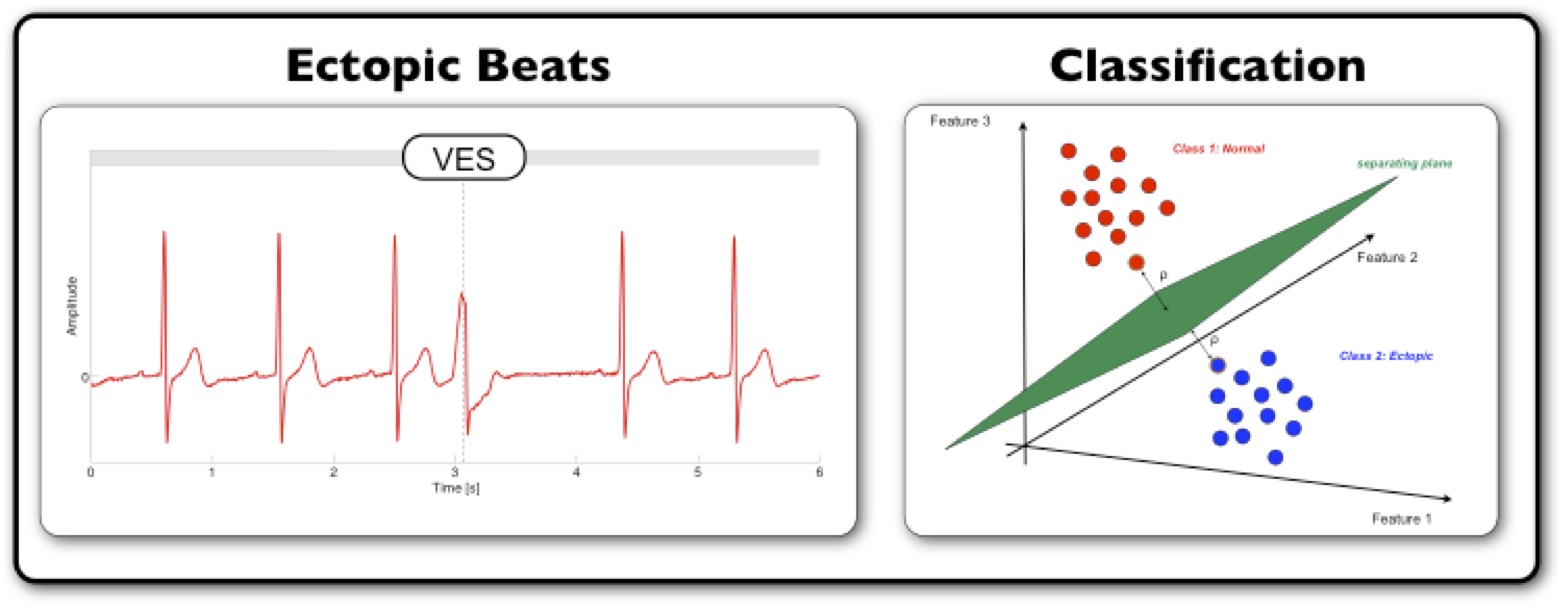Optimizing morphological and rhythmical fea-tures for a QRS complex classification system
- Typ:Bachelorarbeit
- Betreuung:
- Bearbeitung:
-
Early detection of ectopic beats has become the center of attention in many clinical applications, as they are a common cause of cardiac arrhythmia. One example is the sudden death of hospitalized patients suffering from an acute myocardial infarction, which is caused by an electrical disorder in the heart muscle leading to ventricular fibrillation. This tachycardial state is often preceded by ventricular premature beats. Finding those ventricular ectopic beats can help to identify the susceptible patients and prolong their life.
Studies show that atrial fibrillation, which is actually the most important cardiac arrhythmia and in many cases the origin of stroke, can be initiated by irregular-atrial beats. Discovering this disease by finding the atrial ectopic beats can improve the lifestyle of many patients. Beyond these applications, it is important to fully identify and understand the influence of ectopic beats on the characteristic parameters of the ECG (such as RR intervals, instantaneous heart rate, QT intervals and ST intervals) and blood pressure. Such an analysis can be automated only if an accu-rate detection and classification of ectopic beats is implemented.

In order to automatically detect ectopic beats in the ECG it is necessary to find rhythmical and morphological features that clearly distinguish them from the normal beats. In a previous work a Support-Vector-Machine was trained and tested using a large dataset of QRS complexes coming from the MIT-BIH Arrhythmia Database. The classifier delivered very good classification results using a cross validation on the same dataset. However, when applied to new data, the classifier showed some deficiencies. The achieved positive predictive value of 78% and sensitivity of 86% could still be improved. This research project should focus on the optimization of the features used to classify the QRS complexes and improved the classifications results.
The following tasks should be carried out during the research project:
1. Literature research in order to learn more about ectopic beats and the common methods of detecting them.
2. A closer look to the current rhythmical and morphological features use for the classification.
3. Training and testing of a suitable classifier with optimized features.
4. Evaluation of the classification results using new databases.

